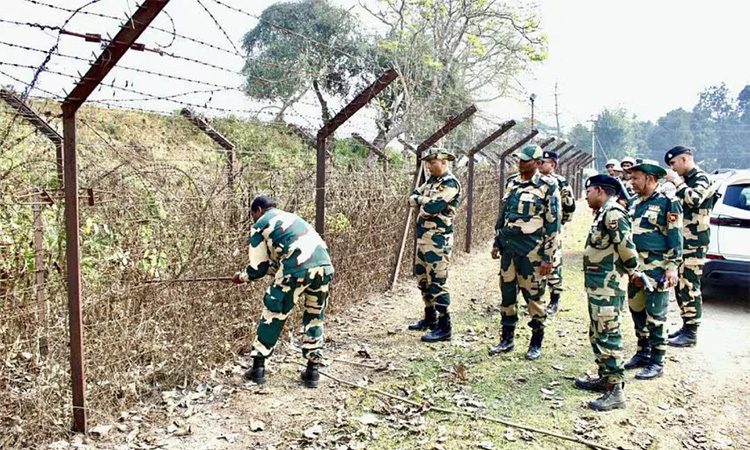In a major move to enhance border security, the Indian government has allocated Rs. 31,000 crore for the fencing of the India-Myanmar border. The initiative is part of a broader strategy to strengthen national security, curb illegal immigration, and prevent cross-border smuggling and insurgent activities along the porous and sensitive Indo-Myanmar border, which stretches over 1,643 kilometers. This project marks a pivotal step in safeguarding the northeastern region of India, which shares a complex and rugged border with Myanmar.
Importance of Border Fencing Along the India-Myanmar Border
The India-Myanmar border is one of the most challenging international boundaries to secure due to its difficult terrain, which includes dense forests, mountains, and rivers. This region is also known for insurgent movements, drug trafficking, and human trafficking, making it a hotspot for security concerns. Fencing the border is seen as an essential measure to curb these activities and bring stability to the northeastern states, particularly Manipur, Mizoram, Nagaland, and Arunachal Pradesh, which are directly affected by cross-border issues.
- Curbing Illegal Immigration: One of the primary objectives of the Myanmar border fencing project is to reduce illegal immigration from Myanmar into Indian territory. The porous nature of the border has allowed many undocumented migrants to cross over, creating demographic and security challenges in the northeastern states. The new fencing project is expected to plug these gaps and regulate cross-border movement.
- Preventing Smuggling and Trafficking: The Indo-Myanmar border is notorious for the smuggling of arms, drugs, and contraband goods, which has fueled insurgency and unrest in the northeastern states. Additionally, human trafficking, particularly of women and children, has been a persistent issue in the region. Border fencing will act as a deterrent to these illicit activities and help authorities maintain greater control over border crossings.
- Countering Insurgency: Several insurgent groups operate along the India-Myanmar border, often taking advantage of the rugged terrain to launch cross-border attacks or seek refuge in Myanmar. By fencing the border, the government aims to restrict the movement of these militant groups and prevent them from using Myanmar as a safe haven for planning and executing operations against India.
The Allocation of Rs. 31,000 Crore: A Major Investment
The Rs. 31,000 crore allocation by the Indian government is one of the largest investments made for border infrastructure in recent years. This substantial amount is earmarked for the construction of modern fencing, surveillance systems, and other necessary border security infrastructure. The fencing project will include:
- High-Tech Surveillance Systems: The border fencing will be equipped with state-of-the-art technology, including thermal imaging cameras, motion sensors, drones, and radars to monitor and detect any unauthorized movements across the border. These high-tech systems will allow the Border Security Force (BSF) and other security agencies to keep a 24/7 vigil over the border.
- Construction of Border Outposts (BOPs): To support the fencing initiative, the government will also build new Border Outposts (BOPs) at strategic locations along the India-Myanmar border. These BOPs will serve as the primary base of operations for security personnel deployed to monitor and patrol the fenced areas.
- Improved Roads and Connectivity: In addition to fencing, the government is also focused on improving road connectivity along the border areas. The difficult terrain has often posed logistical challenges for security forces, but with improved roads and infrastructure, their mobility and response times will be significantly enhanced.
The decision to allocate Rs. 31,000 crore for border fencing with Myanmar is not only about internal security but also holds significant strategic importance for India’s defense posture in the region.
- Balancing China’s Influence: Myanmar shares a long border with both India and China, and the latter’s increasing influence in Myanmar has been a matter of concern for India. Strengthening the border with Myanmar will help India maintain a stronger strategic position in the region and counter any potential threats posed by China’s proximity to its northeastern states.
- Protecting the Northeastern States: The northeastern region of India has historically been sensitive to both internal and external threats. Fencing the border will provide greater security to the region, fostering economic development and reducing the influence of insurgent groups that have destabilized the area for decades.
- International Cooperation with Myanmar: India and Myanmar have long-standing diplomatic and security cooperation, especially in counter-insurgency and cross-border security operations. The fencing of the border is expected to strengthen this cooperation, as it will make it easier for both countries to collaborate in controlling insurgency, drug trafficking, and other illegal activities.
While the allocation of Rs. 31,000 crore is a promising start, the implementation of the fencing project will face several challenges, including:
- Difficult Terrain: The Indo-Myanmar border runs through some of the most challenging terrains in the world. The dense forests, hills, and rivers will make construction difficult, and ensuring the durability of the fencing in these conditions will be a major logistical hurdle.
- Local Resistance: Some indigenous communities living along the border may resist the construction of the fence due to concerns about losing access to their traditional lands or being cut off from their relatives in Myanmar. The government will need to engage with local stakeholders and address their concerns to avoid potential conflicts.
- Maintaining Security During Construction: Insurgent groups operating in the region may attempt to disrupt the fencing project. Ensuring the safety of workers and security personnel during the construction phase will be a critical concern for the government.
Despite these challenges, the Indo-Myanmar border fencing project represents a significant step forward in securing India’s northeastern frontier. The government’s commitment to investing Rs. 31,000 crore in this endeavor underscores the importance of the project for national security and regional stability.
The Indian government’s decision to allocate Rs. 31,000 crore for fencing the India-Myanmar border is a vital move toward strengthening the nation’s security and protecting the northeastern states from cross-border threats. As the project progresses, it is expected to yield positive results in curbing illegal immigration, preventing smuggling and insurgency, and enhancing overall border security.

